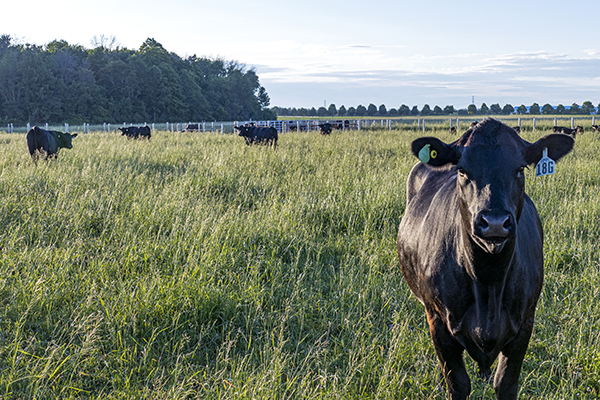A Herd in Progress: BCRC’s New Heifer Development Webpage Addresses Nutrition, Breeding Management, Biosecurity & More

Developing heifers is a necessary part of cow-calf production in order to replace older cows, increase herd size or change genetics. The BCRC has a new Heifer Development webpage designed to guide producers through important considerations related to retaining or buying heifers.
Is it better to buy heifers from an outside source? Does it make sense to retain and develop heifers on your own farm? Which option is more economical? What biosecurity concerns are there? This new webpage can help you weigh important herd health, economic, genetic and environmental considerations when developing heifers.
First-calf heifers are expected to breed, deliver and raise a calf, and rebreed in a timely fashion, all while they are still growing and developing into mature cows. The management of heifers post-weaning through breeding and calving will set the tone for the female’s entire productive lifetime.
COSTS AND BENEFITS of RETAINING OR BUYING HEIFERS
Whether you raise your own heifers or buy replacements, it all comes at a cost. Research has shown it can take a heifer up to six calves before she has recouped the expense of development.
Retaining heifers can be a good option to lower up-front cash costs, make use of existing resources, reduce biosecurity concerns and ensure replacement females are well suited to your farm’s environment. On the other hand, producers need to factor in post-weaning management, experience and infrastructure required to develop heifers from weaning to their first calf. As well, there is financial risk and opportunity cost to retaining heifers.
Purchasing heifers may be the best option for some operations. It allows for rapid herd expansion, can allow you to quickly change a breeding program and eliminates the risk of death loss or disease outbreaks between weaning and breeding. Buying heifers does come with some risk, however, as it requires a large cash outlay, and it’s tricky to predict how new animals will react to different management systems. It can also be a concern for disease introduction.
Biosecurity and heifer health management
Biosecurity can be compromised when bringing purchased cattle, such as bred heifers, onto your farm. Young females can have lower levels of immunity and typically have higher than average parasite burdens compared to older cows.
Producers should buy breeding stock from reputable sources that have a comprehensive and consistent herd health program. Tailoring a vaccination and parasite management program specific for replacement heifers is best done in consultation with a veterinarian.
Heifer Nutrition Management
Heifers require 10-20% more energy and protein than cows, yet are only able to eat about 80% as much dry matter, making them vulnerable to nutritional challenges. Separate feeding allows for targeted nutritional management and supplementation (if needed) and reduces competition from mature cows who tend to outcompete younger females at the feed bunk or in extended grazing situations.
Feeding replacement heifers separately from the rest of the main herd is a valuable management practice that can pay off.
Weight, age and breed are important factors in determining when heifers reach puberty. There are a few schools of thought regarding what percentage body weight heifers should be at prior to breeding. Some heifers will reach puberty and cycle at 55% of their mature weight, while others need to be at 65% to cycle. Research shows heifers may be fed to achieve more modest (and economical) post-wean gains with the goal of 50-55% of mature weight before turning bulls out. However, there can be trade-offs to breeding early, which may include lower conception rates.
Heifer Breeding Management
Establishing breeding momentum is key to ensuring heifers are bred early and stay in the herd for longer. While it only takes mature cows 50-60 days to return to estrus post-calving, it naturally takes heifers 80-100 days to recover and cycle post-calving.
Breeding heifers to calve early in the calving season, in some cases prior to the main cow herd, will help ensure that they recover and resume cycling well in advance of breeding season.
To learn more about nutrition, body condition scoring, breeding management, economics and record-keeping specific for heifers, visit BCRC’s new Heifer Development webpage. You can also read case studies of producers across Canada and learn how they manage heifer development on their farms.
Sharing or reprinting BCRC posts is welcome and encouraged. Please credit the Beef Cattle Research Council, provide the website address, www.BeefResearch.ca, and let us know you have chosen to share the article by emailing us at [email protected].
Your questions, comments and suggestions are welcome. Contact us directly or spark a public discussion by posting your thoughts below.